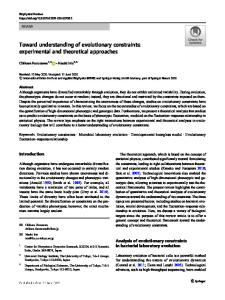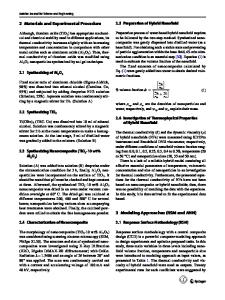Investigation of thermal aspects of high-speed drilling of bone by theoretical and experimental approaches
- PDF / 4,635,675 Bytes
- 14 Pages / 595.276 x 790.866 pts Page_size
- 7 Downloads / 343 Views
SCIENTIFIC PAPER
Investigation of thermal aspects of high‑speed drilling of bone by theoretical and experimental approaches Ehsan Shakouri1 · Milad Ghorbani Nezhad1 · Pezhman Ghorbani1 · Fariba Khosravi‑Nejad1 Received: 22 March 2020 / Accepted: 26 June 2020 © Australasian College of Physical Scientists and Engineers in Medicine 2020
Abstract Heat generation during bone drilling operations is a serious challenge for the internal fixation surgery of bone fracture. Indeed, the heat generated at the drilling site causes complications including local temperature rise, thermal necrosis, irreversible damages to the bone tissue, and possible failure of orthopedic surgery. High-speed machining is an advanced method which has achieved remarkable results in some cases of reducing the temperature rise of the tool or workpiece. The present research examines high-speed drilling (HSD) of the bone using theoretical (based on Orthogonal Cutting theory and High-Speed Cutting model) and experimental (based on infrared thermography) approaches. The thrust force and temperature changes of the bone and drill bit have been measured at different rotational speeds. The drilling tests have been performed under a constant feed rate of 100 mm min−1, hole depth of 8 mm, and 18 rotational speeds of 1000–18,000 r min−1 (with 1000 r min−1 intervals) on a bovine femur. The results indicated that application of high rotational speeds in most cases caused increased temperature rise of the bone; only the rotational speed of 7000 r min−1 (which is associated with dramatic force reduction) and speed of 11,000 r m in−1 (which is associated with alteration of the chip formation mechanism and its nature) resulted in the minimum extent of temperature rise in the bone. It was also observed that the High-Speed Cutting model was able to correctly estimate the threshold of high-speed machining range for the bone (5000 r m in−1) and was also valid for the bone drilling operation. Keywords Bone fracture · Internal fixation · Temperature rise · Thermal necrosis · High-speed drilling · Infrared thermography
Introduction Machining operation constitutes an essential step in bone surgery such as immobilization of the fracture site, osteotomy, and skull base neurosurgery. Drilling operation is one of these processes which is widely used for creating holes to install self-tapping screws and plates in the internal fixation surgery of the bone fracture site. As with other machining operations, during bone drilling, a major part of the energy applied to the tool for chip formation and hole creation is changed into heat. Part of the heat generated during this process is discharged via chips to the outside of the hole. However, a considerable portion of it enters the drill bit and * Ehsan Shakouri e_shakouri@iau‑tnb.ac.ir 1
Faculty of Engineering, Islamic Azad University-Tehran North Branch, Sadoughi Blvd, Hakimiyeh Wayout, Shahid Babaei Highway, Tehran 1651153311, Iran
bone, causing their temperature rise. In case of bone temperature rise and its exceeda
Data Loading...











